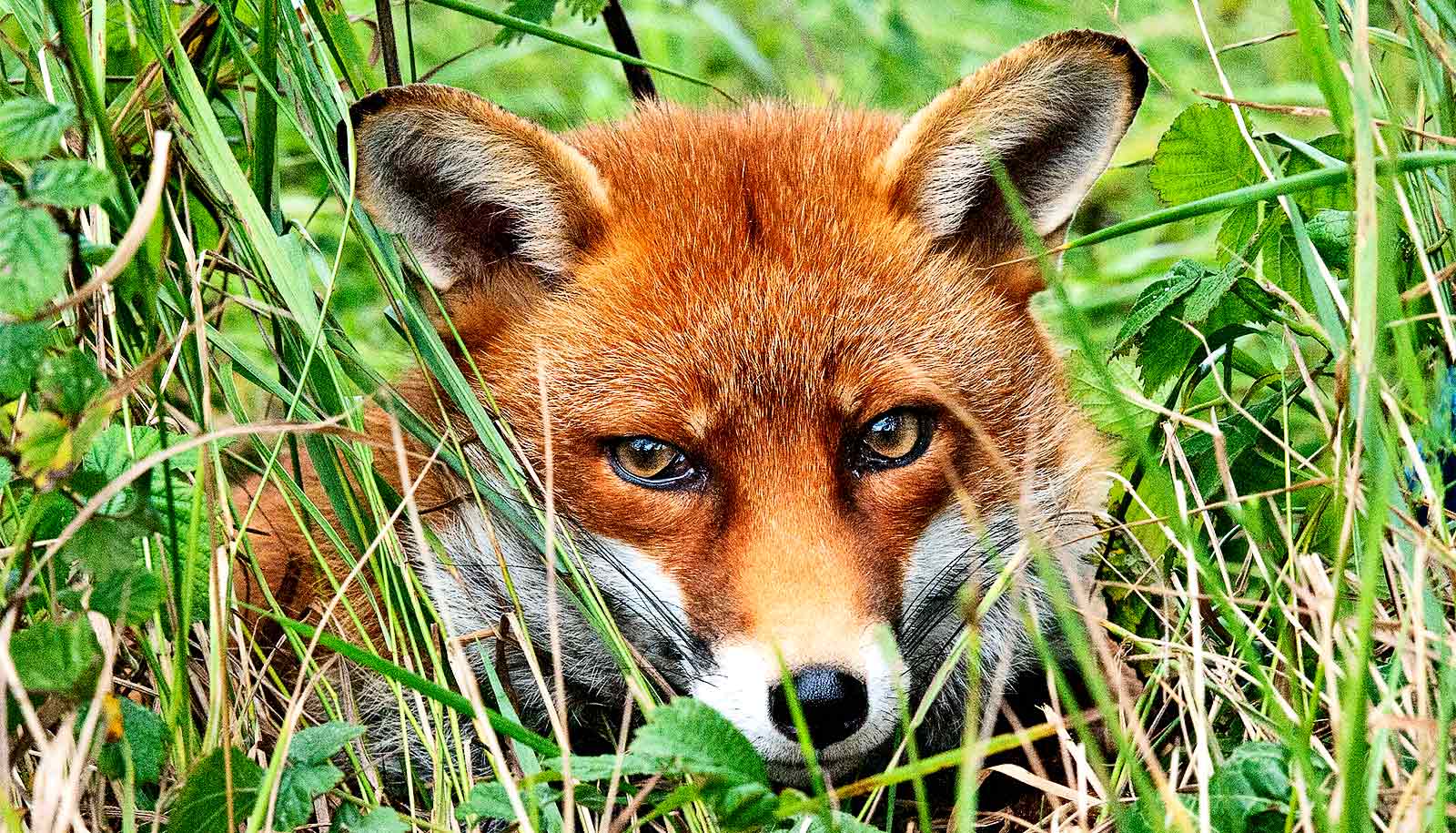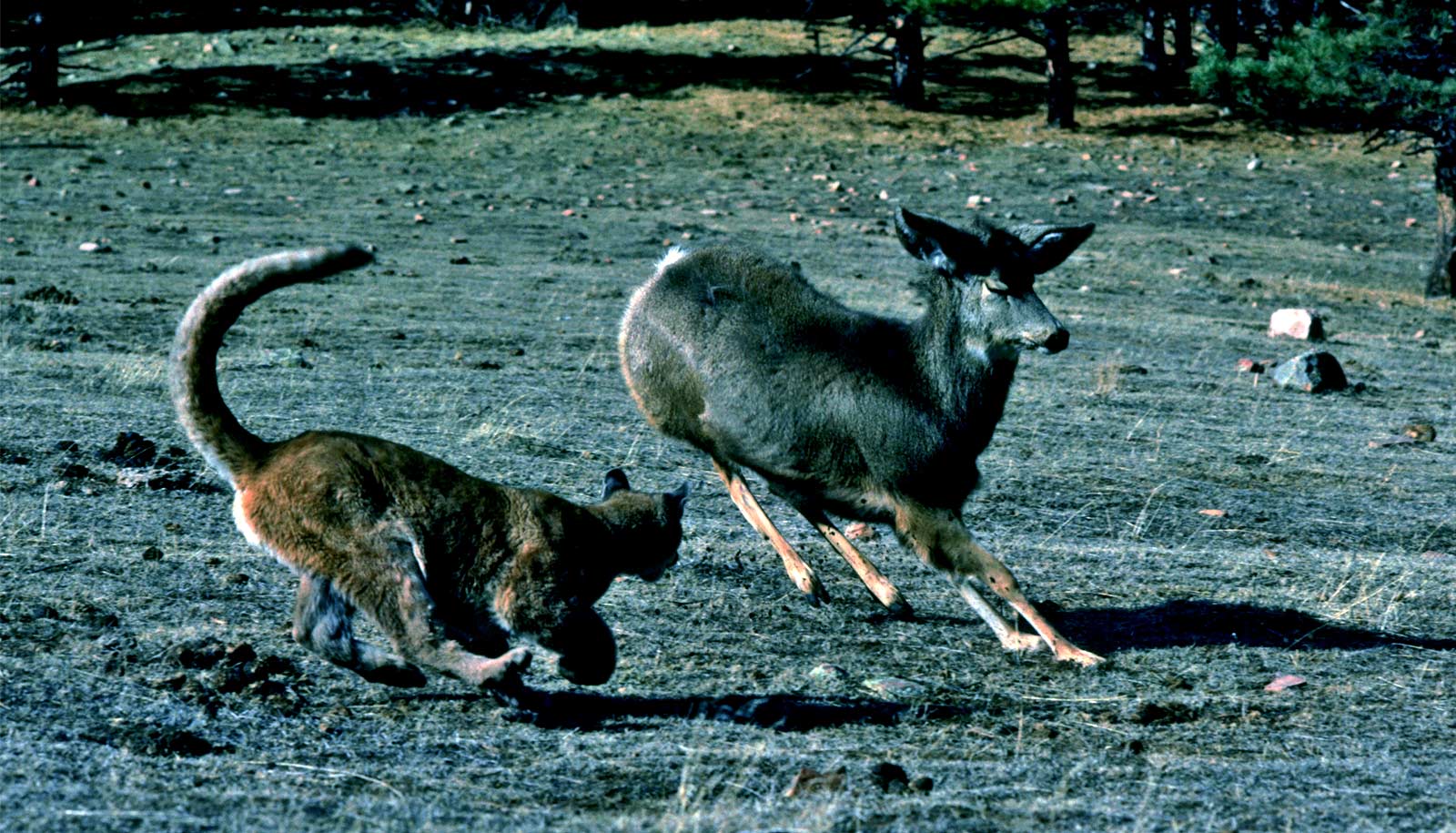Wild animals may hang out in suburban yards rather than in the woods because people feed them—sometimes accidentally—and to a lesser degree, provide them with shelter, a new study shows.
“They’re using the gardens a little bit, they’re using the brush piles a little bit, and they’re using the water features, but feeding has the most dramatic influence on animal activity in the backyard,” says Roland Kays, research associate professor at North Carolina State University and director of the Biodiversity & Earth Observation Lab at the NC Museum of Natural Resources.
Researchers designed the study in Frontiers in Ecology and Evolution to understand what scientists call the “urban wildlife paradox.” While scientists know human development generally causes biodiversity loss, they’ve also found that moderately developed areas can have an abundance and variety of mammals compared with wild areas.
“There’s this idea that nature and humans don’t coexist well,” Kays says. “But what we’ve been finding is that when it comes to mammals, especially in North America, they actually do pretty well around people. You end up with high abundance. You expect there to be fewer animals, and there’s actually more.”
Why more wild animals?
To test whether food and shelter attract animals, researchers set up cameras in the backyards of 58 homes in North Carolina near Raleigh, Durham, and outside of Chapel Hill, and in nearby forests in rural and urban areas nearby for comparison.
Analyzing the pictures, researchers discovered seven wild animal species—squirrels, gray and red foxes, Virginia opossum, eastern cottontail rabbits, woodchucks, and eastern chipmunks—were more frequently seen in yards compared to forests. Eleven species, including white-tailed deer, squirrels, and raccoons, were more common in suburban forests compared to rural ones.
“This basically confirmed the urban wildlife paradox, showing that some species are more abundant in yards,” Kays says. “It’s not a big surprise if you live in the suburbs—you see the animals. It’s the squirrels, raccoons, deer, and opossum.”
Feeding wild animals—mainly at bird feeders—had the strongest impact on the abundance of animals in a yard. Eastern gray squirrels were the most common sight at feeders. They were more common at feeders than in suburban or rural forests. Other common species at feeders included cottontail rabbits, raccoons, and opossums.
“This supports the idea that direct human subsidies are a big part of the explanation for the urban wildlife paradox,” Kays says. “It shows that individual decisions by homeowners and private property owners can have a big impact on the wildlife in the backyard and living in the area.”
Don’t feed the bears, but what about the bunnies?
Predators such as coyotes and foxes were slightly more common in yards when other prey animals, such as squirrels or rabbits, were more abundant. However, the effect wasn’t strong—the researchers say it would take the number of prey to increase by 713 times to double the number of predators in the yard. They only observed one coyote and one red fox eating compost.
“There was some attraction to prey, but it was a pretty small effect,” Kays says.
Meanwhile, fences deterred fox and other predators, and pets deterred opossums and raccoons.
Kays says the findings raise questions about what homeowners should do, and whether attracting wildlife is good or bad.
“You see widespread recommendations: Don’t feed the bears. Where do you draw the line from small birds to squirrels, rabbits, and raccoons? When does it become bad to feed the animals, even if you’re doing it accidentally?” Kays says.
“On one hand many people enjoy having wildlife around and they can help support a healthy local ecosystem; however, they could cause conflict with people.”
Additional coauthors are from the University of Montana.
Source: NC State


